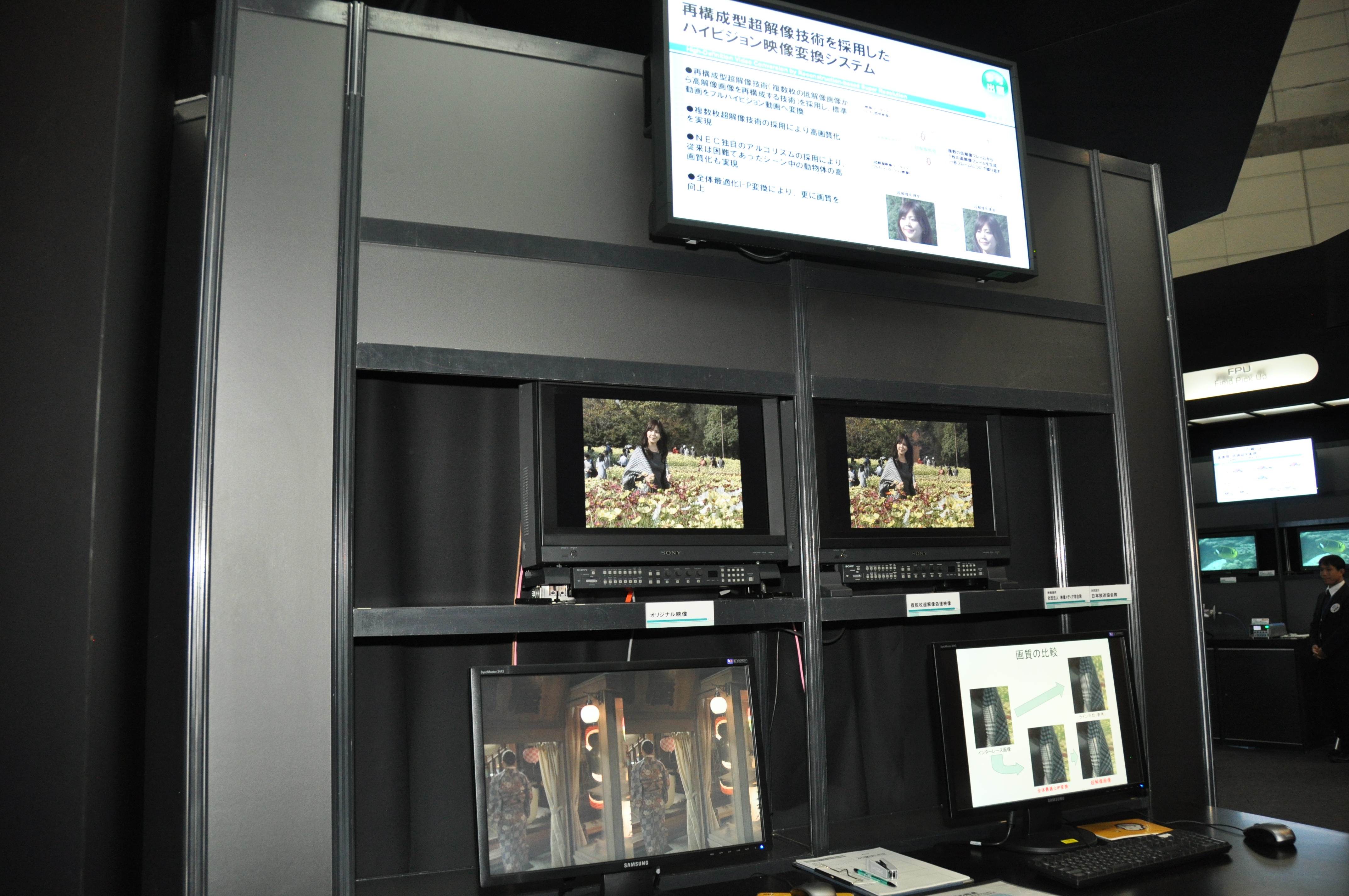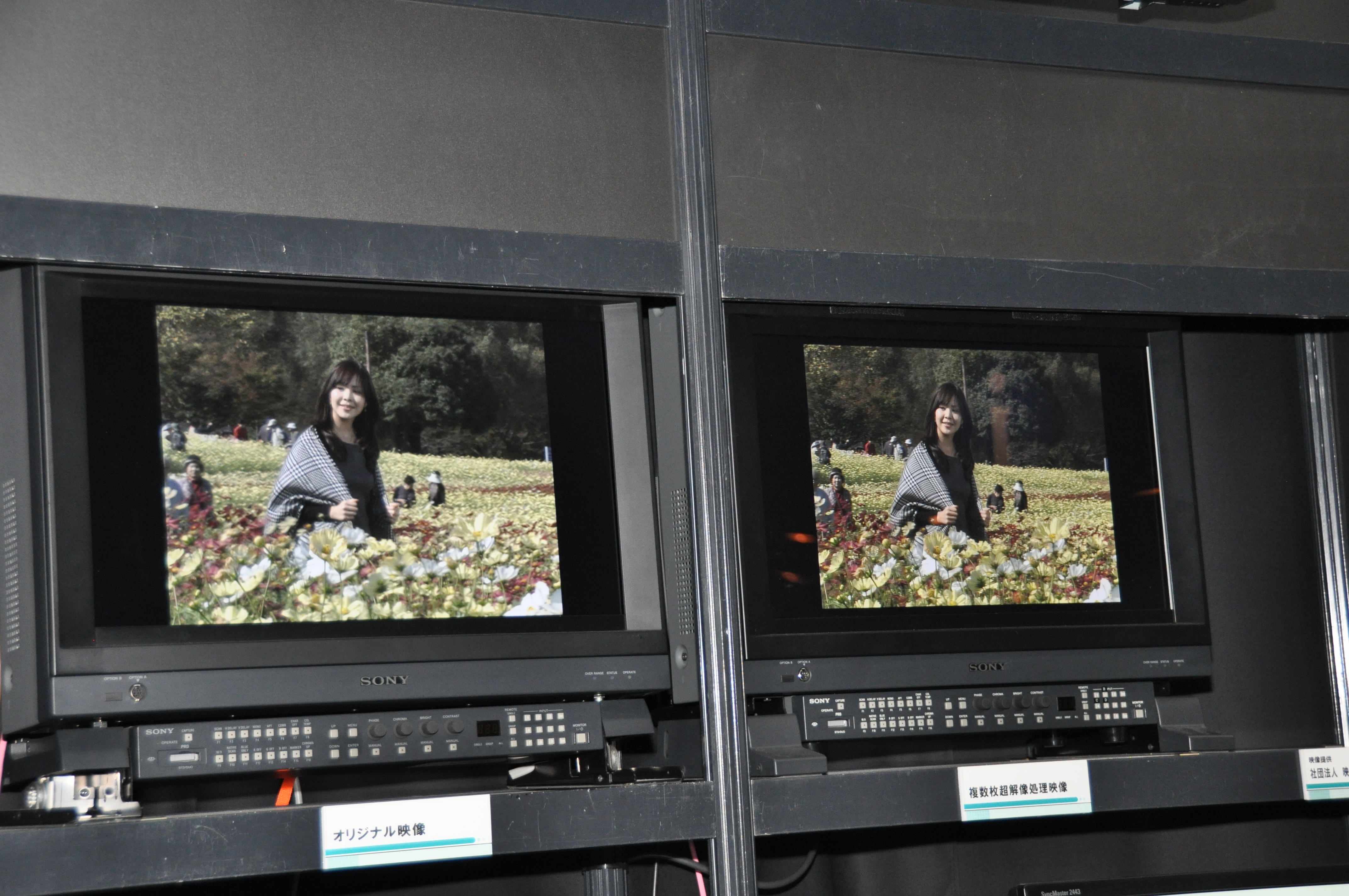2011.11.18 UP

NEC gave a demonstration of its upconversion technique, which is based on super high resolution technology. Previous generation upconversion increased the number of scan lines but did not boost image quality. This new upconversion implementation draws on super high resolution technology to simultaneously boost image quality and increase scan lines.
■ Processing produces higher resolution images than the source image
NEC exhibited its new upconversion technique, which is based on super high resolution technology. Super high resolution uses mathematical processing to produce images that are higher resolution than the source image. Standard upconversion approaches this by raising the number of scan lines, which does not increase the resolution. Increasing the number of scan lines can sometimes reduce image quality and create a blurry image. In contrast, super high resolution raises resolution and increases the apparent quality of the image by boosting its sharpness. NEC has been pursuing super high resolution technology across the board, starting with single-frame still imagery, and last year started selling its super high resolution transcoder, the SR-1100.
This time around, NEC demoed multi-frame imagery (moving images) using super high resolution techniques. Normally, movement causes frames to drop and makes executing super high resolution techniques difficult. Up until last year, IP conversion or deinterlacing techniques were used to convert interlaced images to sequentially scanned images, but this lossy process resulted in lower quality images. This year, NEC demonstrated how, through the efficient use of motion vectors, the "active ingredient" in creating super high resolution imagery can be effectively detected in moving images, raising the precision of the sequential scanning conversion. As a result, images which last year would not have converted properly will now be processed into super high resolution without fail.
NEC stated their interest in using this technology to boost the image quality of archival films. The techniques showcased in the demo were not done in real time, but the company claims they can quicken processing speed by employing parallel processing in the future.








